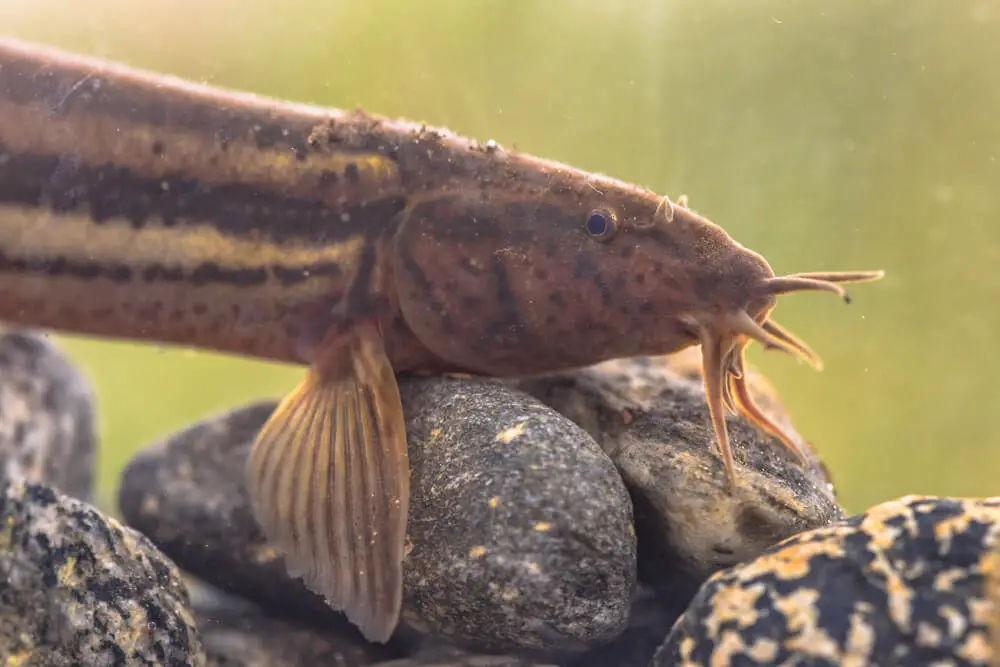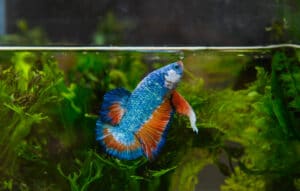A dojo loach is a fascinating fish to have in your aquarium, and is a great fish for those who are new to aquarium life. There is a lot to know about these fish before bringing them home. One thing you might wonder is how do dojo loaches breed, especially if you want to control how many fish end up in your aquarium.
When living in an aquarium, dojo loaches aren’t known to just breed each season. It’s going to take some effort on your end if you want your dojo loaches to breed. If you don’t, then you should just avoid inadvertently setting up the requirements necessary to encourage these fish to breed.
There’s quite a bit to know about how dojo loaches breed, especially if you’re looking to create a family of loaches in your aquarium.
How Do Dojo Loaches Breed?

A dojo loach won’t just breed on their own when living in an aquarium. You will have to help them with the process. Changing some of their aquarium conditions at the right time is the start of preparing them for breeding. This is going to help mimic the breeding season that dojo loaches were used to when they were in the wild.
When Are Dojo Loaches Ready To Breed?
Once your dojo loaches are about two to three years old, you can consider helping them through the breeding process. You will have to make the appropriate accommodations for these fish to make their aquarium as close to their natural environment as possible. You can start the process in the following winter once they reach the age of sexual maturity.
How Dojo Loaches Breed In The Wild?

The dojo loach will start getting ready for mating season in the winter. These fish enjoy the lower light levels and the cooler water in winter.
They’ll be able to interpret the seasons changing when they experience the water beginning to warm up and see more sunlight. These fish have an innate and fascinating ability to sense weather changes.
When spring comes along, the dojo fish will approach breeding similar to the way they’ll do so in the aquarium after you’ve prepared them for breeding.
The male will work on luring the female. When the female is ready, the male will initiate breeding through making contact with the female until she releases her eggs. The male will then fertilize the eggs, and the process is complete.
How The Breeding Process Works?
A male dojo loach will try to entice the female into the breeding process. They go through their own particular form of courting the female.
If you have multiple males in the aquarium, you might notice that they are a bit more active when the female is ready to breed. While it can be concerning to watch, rest assured that this change in behavior won’t last for long.
Once the female agrees that breeding should occur, the dojo loaches will mate.
The male dojo loach will approach the female and wrap their body around her. When the female is ready, she will release eggs from her body. At this point, the male will go to the eggs and fertilize them. After fertilization, the eggs will usually hatch within a few days.
After Breeding Is Complete
Once male and female dojo loaches have finished breeding, they will go on living their lives. They do not raise the babies or do anything to help them thrive. In fact, they sometimes eat the eggs, thinking that they’re food.
The babies, when in the wild, will be able to figure out how to navigate things, but in an aquarium, they’ll need your assistance.
Do Dojo Loaches Lay Eggs?
A female dojo loach will lay eggs, but they have to be encouraged to do so during the breeding process. When breeding is initiated, the female can lay up to 50 eggs at a time.
One thing to be aware of is if you want those eggs to survive, you will have to have a separate aquarium prepared to move the adult dojo loaches to. Otherwise, they may consume the eggs before they’re able to hatch.
How Can You Tell If A Dojo Loach Is Male Or Female?
There are very few visual cues that can help you determine the sex of your dojo loach. They will be important to be able to discern if you are either concerned about breeding or want to try breeding your fish. Otherwise, it’s a bit of a guessing game as to which sex your dojo loach is.
Some traits you may notice that can help you determine their sex are:
- Female fish tend to be larger than male fish
- Males have longer pectoral rays, which can be found on both sides of the fish located right below their heads
- A male’s pectoral rays often appear triangular, whereas a female’s don’t
- Females usually have smaller fins than males
How To Breed Dojo Loaches?
Breeding loaches might be something to consider as these fish are social and don’t like being alone in an aquarium. That said, you need to prepare ahead of time to breed these fish. Even if you do everything according to protocol, there’s potential that you won’t be successful.
Those who don’t have much experience with breeding fish may find they have to try a couple of seasons before they are able to breed their dojo loaches.
#1. Pick The Right Season
Breeding tends to occur with loaches in the spring, so you’ll start preparing them for the breeding process in the winter. If your dojo loaches don’t try to mate once spring arrives, don’t be concerned. Sometimes, these fish will wait until later in the spring, and may even wait until the beginning of summer.
#2. Change The Lighting
In winter, you will start to lower the lighting in their aquarium. This will emulate the darker conditions of a winter in their natural habitat. When spring comes along, you can slowly start to give them more light. When spring is in bloom, your dojo loaches should be getting around twelve hours of consistent light a day.
#3. Create The Ideal Temperature Conditions
In winter, dojo loaches are used to the temperatures getting colder. They’ll be able to tell once the temperature starts to get warm that spring has come, and it’s time to mate. You’ll have to closely monitor temperature changes. Even though dojo loaches are fairly adaptable, you don’t want to shock them by changing the temperature of their aquarium too drastically.
#4. Monitor Your Dojo Loaches As They Do Their Thing
You don’t have to consistently watch your dojo loaches breed, since it can take a long time for the male to convince the female to breed.
Once mating has started, the process usually takes at least a couple of hours. What you do want to do is check on them often, and be sure you keep your eye out for fallen eggs.
#5. Separate The Adults From The Eggs
You will have to isolate the adults from the eggs until they hatch, which won’t take long. On average, eggs will hatch after two to five days. As mentioned, the eggs could get eaten if the adults are left to their own devices in the aquarium.
You can either move the adults to an aquarium you have prepared ahead of time to meet their needs in terms of conditions, or you can move the eggs if they are all in one place.
Sometimes, female dojo loaches will release their eggs onto a plant or decoration, which you might possibly be able to remove from the aquarium very carefully.
#6. Keep The Babies Healthy
Once the eggs hatch, babies will need a diet of infusoria for at least a month or so to help them get big and strong.
Afterwards, they can eat baby brine shrimp and other fish food. There are no known parental instincts within dojo loaches, so they won’t take initiative to keep their babies healthy once they’re reintegrated into the aquarium, should you choose to do so.
#7. Set Up Homes For Dojo Loach Babies
Since dojo loaches can get large, you may need a couple of aquariums if you plan on keeping them all. Otherwise, you may need to find some people who want to adopt some fish.
Final Thoughts
Dojo loaches have a fairly complicated breeding process when they live in aquariums. If you choose to encourage them to breed, you need to be prepared to care for a lot of dojo loaches. You should also be prepared to put in a lot of work to create the proper conditions for these fish to want to breed.
It can take some trial and error, and the first breeding season could be unsuccessful. You will also have to make the effort to care for any hatchlings, given that their fish parents aren’t going to do it on their own. Breeding these lively and wonderful fish can be fun, as dojo loaches are a joy to have in the home, but it has to be done responsibly.
Hi! I’m Praveen Ghoshal, the founder of eFishkeeping.com. Inspired by my Dad, I got interested in fishkeeping when I was a kid. Since then, I have been involved with this hobby. Currently, I have 3 fish tanks at our home, and I enjoy this hobby with my full family. Read more about me here.







